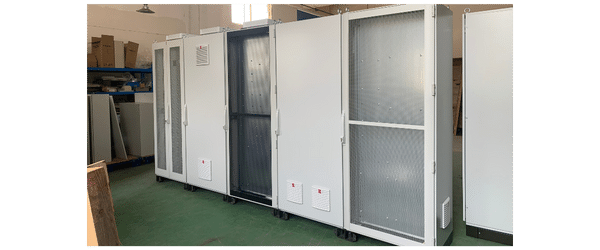Sustainability in Construction: How Electrical Fiberglass Boxes Contribute to Green Building Practices
6/9/20244 min read


Introduction to Sustainable Construction
Sustainable construction is an evolving practice that seeks to minimize the environmental impact of building projects while maximizing their economic and social benefits. This approach is becoming increasingly vital as the global construction industry faces growing scrutiny over its significant contributions to resource depletion, energy consumption, and greenhouse gas emissions. Traditional building practices often rely heavily on non-renewable materials and methods that produce substantial waste and pollution. These practices not only harm the environment but also lead to long-term economic inefficiencies and social challenges.
The adoption of green building methods addresses these concerns by emphasizing the use of renewable resources, energy efficiency, and waste reduction. Sustainable construction techniques focus on creating structures that are environmentally responsible and resource-efficient throughout their lifecycle, from design and construction to operation and eventual demolition. By integrating sustainable materials and practices, the construction industry can significantly reduce its ecological footprint while promoting healthier living and working environments.
Central to the concept of sustainable construction is the use of sustainable materials—products that are environmentally friendly, durable, and often derived from renewable sources. These materials play a crucial role in enhancing the sustainability of buildings. For example, electrical fiberglass boxes, which will be explored in detail later, offer several ecological and performance advantages over traditional metal or plastic alternatives. Their use exemplifies how innovative materials can contribute to green building practices.
As the construction industry continues to evolve, the integration of sustainable practices and materials becomes essential. By adopting these methods, builders and developers not only comply with stricter environmental regulations but also meet the growing demand for eco-friendly buildings from consumers and stakeholders. This shift towards sustainability is not just a trend but a necessary transformation to ensure the long-term viability of the construction sector and the planet.
Advantages of Electrical Fiberglass Boxes in Green Building
The integration of electrical fiberglass boxes in sustainable construction projects offers a myriad of advantages that align with green building practices. One of the primary benefits is their exceptional durability. Unlike traditional materials, fiberglass boxes are resistant to cracking, warping, and other forms of degradation, ensuring a prolonged lifespan. This inherent durability translates to reduced need for replacements and maintenance, subsequently lowering the environmental impact associated with frequent material production and disposal.
Another significant advantage is the lightweight nature of electrical fiberglass boxes. Their reduced weight facilitates easier handling and installation, which can lead to decreased labor costs and faster project completion times. Moreover, the lightweight characteristic contributes to lower transportation emissions, as less fuel is required to transport these materials to construction sites. This reduction in transportation-related carbon emissions plays a crucial role in the overall sustainability of a building project.
Resistance to corrosion is another critical attribute of fiberglass boxes. Traditional metal boxes are prone to rust and corrosion, especially in harsh environments. In contrast, fiberglass boxes maintain their integrity even under adverse conditions, thereby extending their functional life and minimizing the need for replacements. This resistance to environmental wear-and-tear further supports long-term sustainability goals by curbing resource consumption.
From a manufacturing perspective, electrical fiberglass boxes are often produced using environmentally friendly processes and materials. The use of recycled content and low-emission manufacturing techniques helps reduce the overall carbon footprint associated with these products. Additionally, the energy-efficient production methods contribute to the conservation of natural resources, aligning with the principles of sustainable development.
Numerous green building projects have successfully utilized electrical fiberglass boxes, providing concrete evidence of their benefits. For instance, the Green Tower in Chicago incorporated fiberglass boxes to achieve LEED Platinum certification, highlighting their role in creating energy-efficient and environmentally responsible structures. Similarly, the Eco-Friendly Office Park in California leveraged the durability and reduced maintenance needs of fiberglass boxes to minimize operational costs and environmental impact.
Future Trends and Innovations in Sustainable Electrical Components
As the construction industry continues to focus on sustainability, the future of electrical components is poised for significant transformation. Ongoing research and development are paving the way for eco-friendly materials, with electrical fiberglass boxes at the forefront. These components are already recognized for their durability and minimal environmental impact, but the potential for further innovations remains vast.
One of the most promising avenues for future development lies in the integration of smart grids. As buildings become increasingly connected, electrical systems must adapt to manage energy consumption more efficiently. Electrical fiberglass boxes can be designed to accommodate advanced metering infrastructure, allowing for real-time energy monitoring and management. This capability not only supports energy conservation but also aligns with the growing trend of smart buildings and cities.
Another significant trend is the integration of renewable energy sources. Electrical systems must be capable of handling the variable nature of energy generated from solar, wind, and other renewable sources. Electrical fiberglass boxes can be optimized to ensure seamless integration with these systems, providing reliable protection and connectivity. The use of such components can enhance the efficiency and sustainability of renewable energy projects, making them a crucial element in the transition to a greener energy landscape.
Regulatory standards and certifications are also evolving to promote the use of sustainable electrical components in construction. Organizations such as the U.S. Green Building Council and the International Electrotechnical Commission are continuously updating their guidelines to reflect the latest advancements in eco-friendly materials and technologies. Electrical fiberglass boxes that meet these stringent standards can help builders achieve certifications like LEED (Leadership in Energy and Environmental Design), thereby enhancing the overall sustainability profile of construction projects.
In conclusion, the future of sustainable electrical components is bright, with electrical fiberglass boxes playing a critical role in advancing green building practices. Through innovations in smart grid integration, renewable energy compatibility, and adherence to evolving regulatory standards, these components will continue to support the construction industry's sustainability goals.
